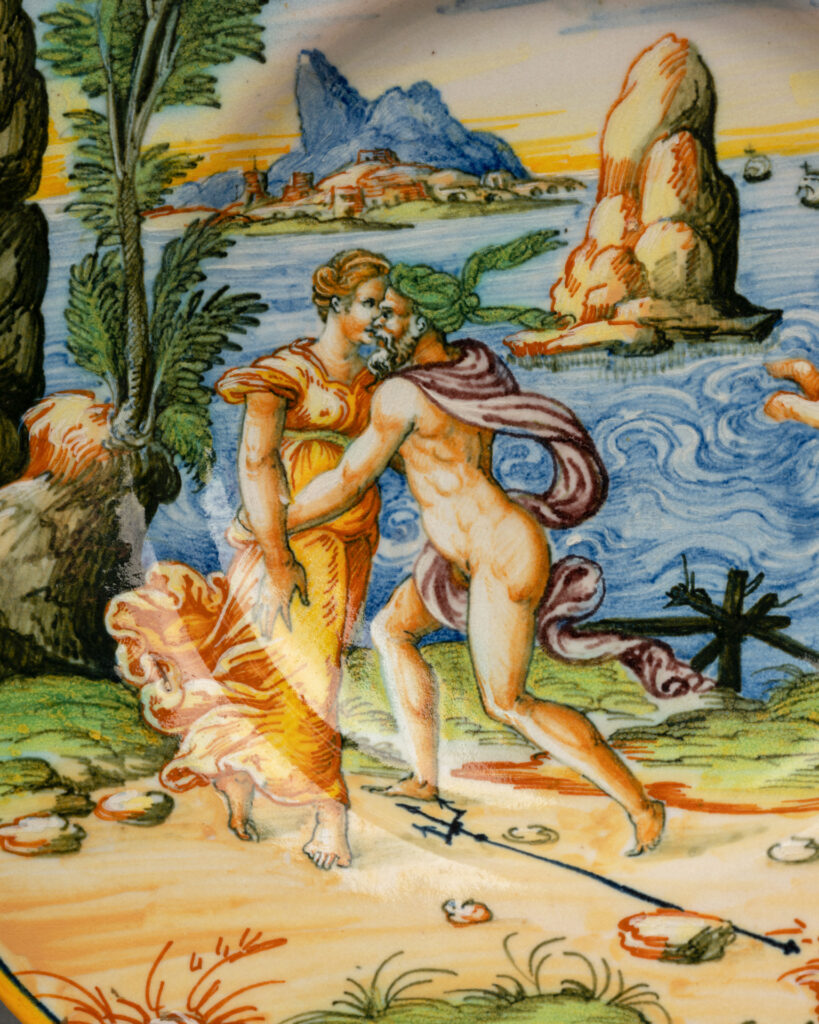This magnificent historiated majolica, dated 1550-1570, comes from Urbino in Italy, probably from Fontana’s workshop.
The painted scene shows Neptune embracing the nymph Cénis, on a shore. Dressed in a green turban and manganese drape, the god drops his black trident at his feet. The nymph wears a puffy ochre dress. The presence of Cupid, winged and swapping his bow for a trident, underlines the amorous nature of the scene. Placed in the sea, three seahorses form Neptune’s chariot, rising from the waters. The landscape is formed by a massive rock dividing the background in two, with boats on one side and an island of buildings and mountains on the other.
This composition is taken from an engraving by Virgil Solis, entitled Cénis et Poséidon, illustrating the 1563 edition of Ovid’s Metamorphoses. The output of the workshop of ceramist Orazio Fontana (1510-1571) is characterized above all by the attention given to the landscapes that form the backdrop to his historiated majolica. The rocks are stylized, and the blue tones used for the sky and water contrast with the orange-red tones and amber complexion of the figures.
On the back of the ceramic are several inscriptions: Netuno, written in the center, in blue; a descriptive note written in German, dating and identifying the plan as coming from the workshop of Orazio Fontana; and finally a second fragmentary descriptive note written in English.
A production of exceptional quality, the work astonishes both by the vivid colors that make up the scene, and by the sensation of intense movement, rendered by the flying draperies, the chaotic movement of the water, and the pose of the Ocean god, running to embrace the nymph.



